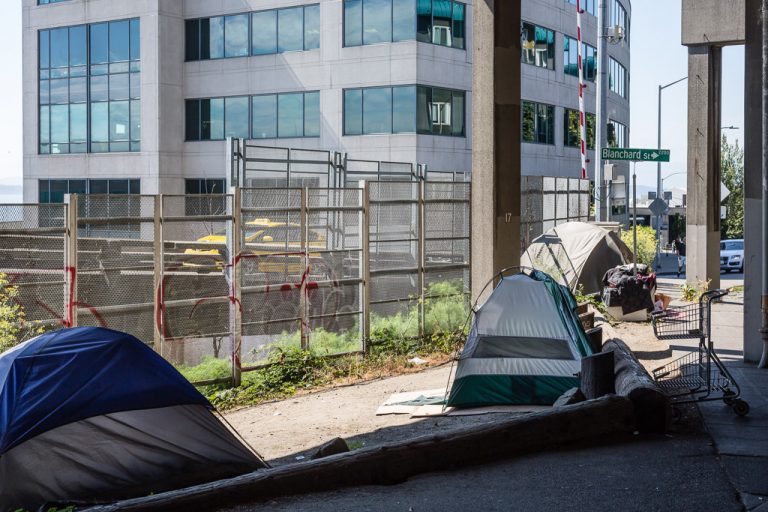Published on April 10, 2021

Oleg Shpungin usually avoids sleeping in tents. They’re creepy, he says, when he can hear someone approaching but can’t see if they’re about to rob him — and he’s been robbed enough.
“A tent is a very dangerous life,” Shpungin said.
But on Monday night, he was cold and weak, and his friend had an open tent in the shadow of T-Mobile Park in Sodo — so he spent the night there.
A neighborhood of train tracks, waterfront cranes and warehouses, Sodo used to see mostly people living in RVs, but in the last year, tent camps have outgrown them, according to Erin Goodman, who heads an alliance of Sodo businesses.
Preliminary numbers from a new study show Sodo is not alone: From Ballard downtown to North Beacon Hill, Seattle has seen a precipitous increase in tents in its urban core.
The survey, completed by researchers and students from Seattle Pacific University and University of Washington, found more than 800 tents in Seattle in spring and summer 2019, before the pandemic. The research team later resampled the highest-populated areas in winter 2019 and then summer 2020, and found the number of tents in those areas had ballooned by more than 50%.
Business groups and angry neighbors have pushed the city for months to do something to relieve the sight and symptoms of the growing encampments, but with shelters shrunk due to fears of coronavirus spread, and with limited space in hotels for people living outside, there are few places for them to go.
Meanwhile, people who put up tents deep in city greenbelts to avoid being hassled or moved have realized they no longer need to hide, because the city mostly stopped removing tents during the pandemic, following federal public health guidance.
“We’re honestly just seeing more people come out into the open,” said Dee Powers, who’s been living in an RV in Sodo for three years. “I’m seeing clusters inching closer to the methadone clinic. I’m seeing communities clustering a little closer to meal programs, to hygiene centers.”
Continue reading at the Seattle Times.
Originally written by Scott Greenstone for the Seattle Times.